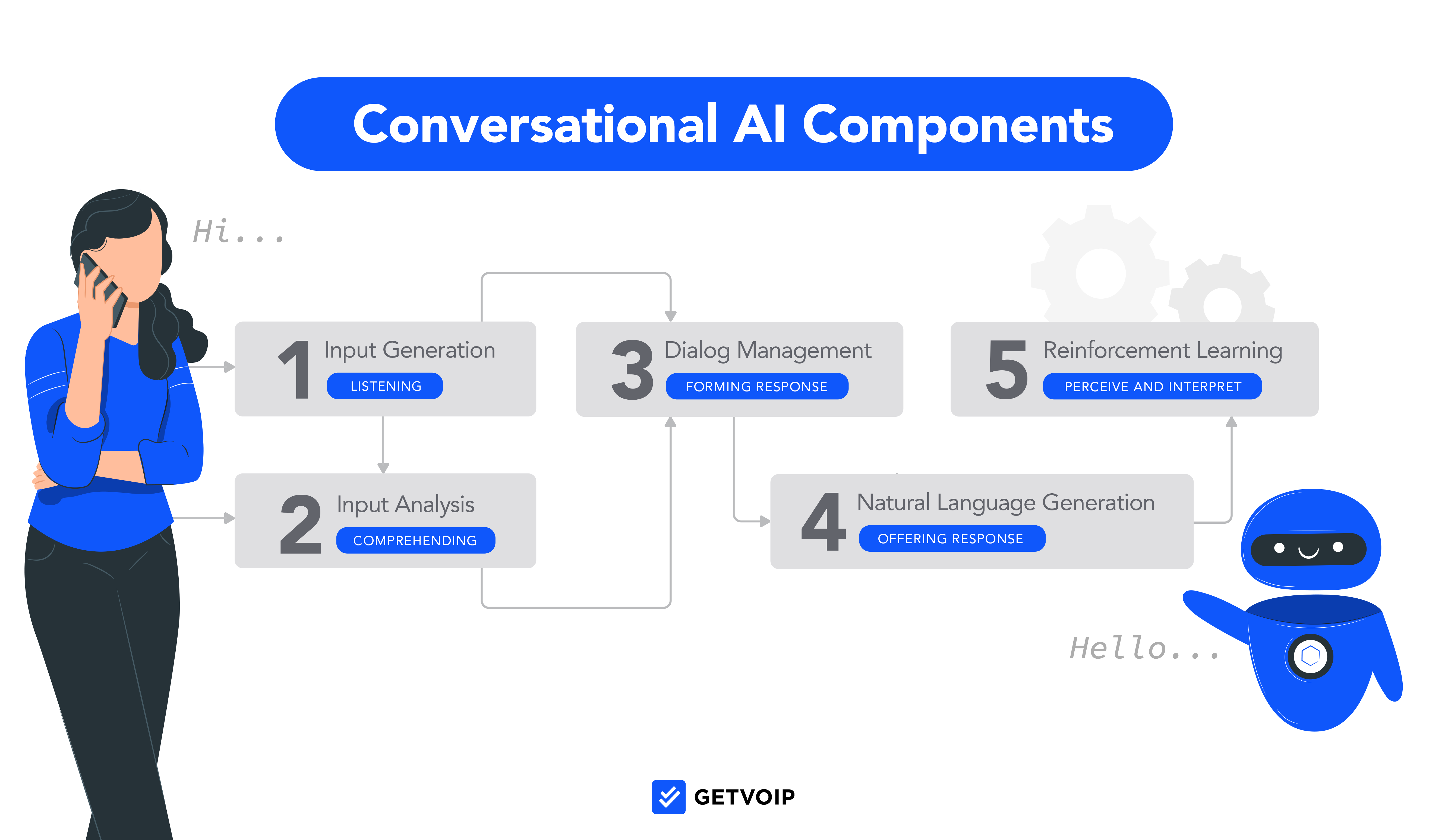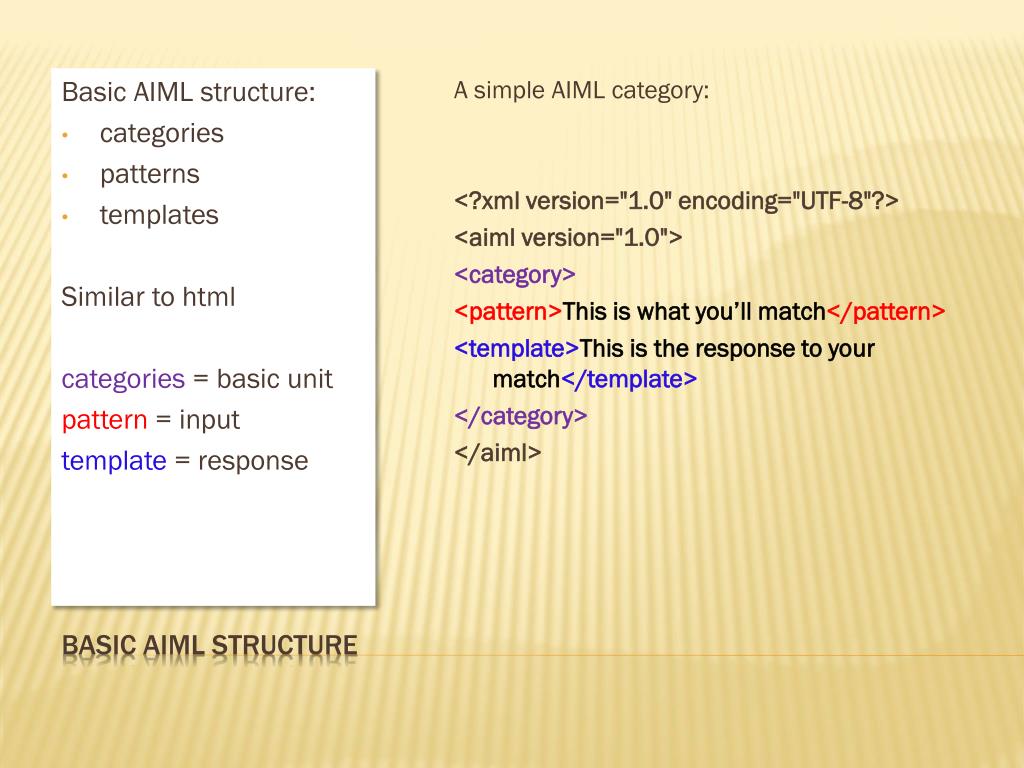AIML Presentation
| Introduction to AIML | ||
|---|---|---|
| AIML stands for Artificial Intelligence Markup Language. AIML is an XML-based language used to create chatbots and virtual assistants. AIML is widely used in the field of natural language processing and conversational AI. | ||
| 1 | ||
| AIML Features | ||
|---|---|---|
| AIML allows developers to create conversational agents that can understand and respond to user queries. It supports pattern matching and template-based responses, making it easy to create dynamic and interactive conversations. AIML supports the concept of context, allowing chatbots to remember user inputs and provide personalized responses. | ||
| 2 | ||
| AIML Structure | ||
|---|---|---|
| AIML consists of categories, which are the basic building blocks of conversational agents. Each category contains a pattern, which is the user input to match against. Categories also contain templates, which are the responses to be generated when a pattern is matched. | ||
| 3 | ||
| AIML Pattern Matching | ||
|---|---|---|
| AIML uses pattern matching to determine which category to use for a given user input. Pattern matching involves comparing the user input against the patterns defined in the AIML categories. AIML supports wildcard matching, allowing developers to create more flexible and dynamic conversational agents. | ||
| 4 | ||
| AIML Templates | ||
|---|---|---|
| AIML templates are the responses generated by the chatbot when a pattern is matched. Templates can include dynamic content, such as variables and conditions, to create personalized responses. AIML templates can also include HTML tags, allowing developers to format the chatbot's responses. | ||
| 5 | ||
| AIML Knowledge Base | ||
|---|---|---|
| The AIML knowledge base is a collection of AIML categories that define the chatbot's conversational abilities. The knowledge base can be expanded and customized to improve the chatbot's performance and accuracy. AIML knowledge bases can be stored and managed using various tools and platforms. | ||
| 6 | ||
| AIML Integration | ||
|---|---|---|
| AIML can be integrated with various platforms and frameworks to create chatbots for different applications. AIML can be used with web-based interfaces, mobile apps, messaging platforms, and voice assistants. AIML integration often involves connecting the chatbot to APIs and databases for retrieving information. | ||
| 7 | ||
| AIML Limitations | ||
|---|---|---|
| AIML is primarily focused on text-based conversations and may not be suitable for complex tasks or voice-based interactions. AIML requires manual creation and maintenance of the knowledge base, which can be time-consuming and resource-intensive. AIML may struggle with understanding ambiguous or context-dependent queries. | ||
| 8 | ||
| AIML Applications | ||
|---|---|---|
| AIML is commonly used for creating customer support chatbots, virtual assistants, and information retrieval systems. AIML can be applied in various industries, including e-commerce, healthcare, finance, and education. AIML-based chatbots can provide 24/ 7 customer support, handle repetitive queries, and streamline information retrieval. | ||
| 9 | ||
| Conclusion | ||
|---|---|---|
| AIML is a powerful language for creating conversational agents and virtual assistants. It offers features like pattern matching, template-based responses, and context management. With AIML, developers can build intelligent and interactive chatbots that enhance user experiences and automate tasks. | ||
| 10 | ||







